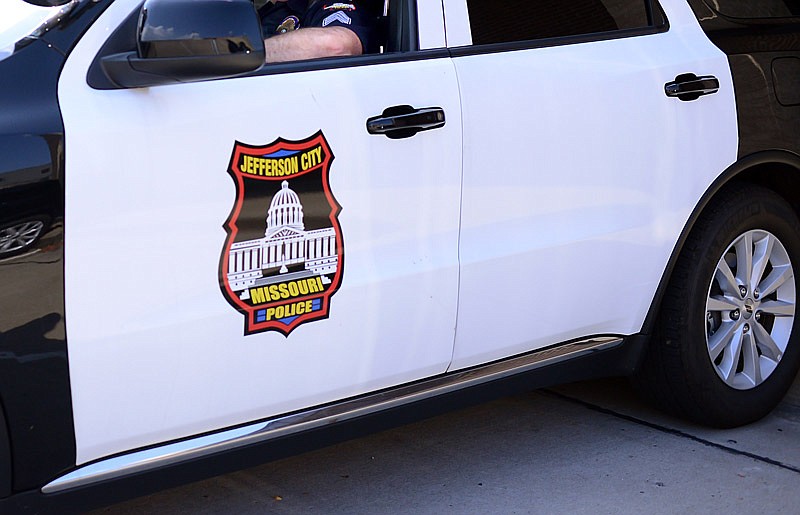Missouri's annual vehicle stops report, released Friday, shows minority drivers are pulled over at a higher rate than white drivers, statewide and locally.
However, local law enforcement officials said the report shows they are dealing with all races in an equitable way.
In 2000, Missouri legislators passed a statute requiring "all peace officers" to report information for each vehicle stop made in the state. The Attorney General's Office has since released its annual Vehicle Stops Report every year, showing the number of stops, as well as post-stop information, for the state and communities. The premise behind the statute was to address issues of racial profiling in Missouri, according to the Attorney General's Office website.
The state's population is 83 percent white, 11.8 percent black and 4.3 percent Hispanic. Of the more than 1.5 million stops made by law officers in the state in 2019, there were more than 1.1 million made on white drivers. Black drivers were stopped more than 297,000 times, and Hispanic drivers were stopped more than 35,400 times.
The report has a disparity index that looks at proportion of stops to the proportion of the population. This year's report uses population estimates covering 2014-18. A value of 1 indicates a group's proportion of vehicle stops equals its population proportion. If the value is above 1 there is over-representation, and if the value is below 1, it's under-representation in traffic stops.
According to the report's findings, the statewide disparity index for white drivers was 0.92, which would indicate white drivers were stopped at slightly below the rate for their population figures.
Black drivers, though, had a disparity index of 1.79, which officials at the attorney general's office said means black drivers in Missouri were stopped at a rate 76 percent greater than expected for their population figures.
The disparity index for Hispanic drivers was 0.79, which was at a rate below their population figures.
Jefferson City's population is 74.9 percent white, 18.7 percent black and 3.7 percent Hispanic, according to the most recent U.S. Census figures.
Last year, the Jefferson City Police Department made 10,928 traffic stops - with 7,415 (67.9 percent) involving white drivers, 3,332 (30.5 percent) black drivers and 70 (0.6 percent) Hispanic drivers.
Of the 767 arrests made from those stops, 383 (49.9 percent) were white drivers, 370 (48.2 percent) were black and eight (1 percent) were Hispanic.
The disparity index for white driver stops in Jefferson City was 0.91. For black drivers, it was 1.72, and it was 0.24 for Hispanic drivers.
"We more closely monitor the percentages throughout the year with the intent of more promptly reacting to indicators of a potential problem," Jefferson City Police Chief Roger Schroeder said. "We've complied with the governing statute since its inception. We believe our officers apply the law in a fair and impartial manner, but we continually strive to ensure we professionally police our community in a manner consistent with our oath of office."
JCPD division commanders conduct an annual review of the statistical data, which they use as an opportunity to remind everyone of their responsibility to enforce laws in a "fair and equitable manner," Schroeder said.
If an officer is determined to stop vehicles at a racially disproportionate rate, Schroeder added, that officer is counseled (and) the process is documented to demonstrate compliance with the statute and to "affirm our organizational commitment to fairly police our community."
Stops made by Jefferson City police in 2019 resulted in 3,351 citations issued and 7,349 warnings.
More men (5,944) were pulled over than women (4,984). The majority of the stops involved drivers who were 18-29 years old.
"Racial profiling is a sensitive issue and can quickly result in an emotional reaction," Schroeder said. "Our in-service training goes beyond the state-mandated minimum number of hours, and we emphasize training in the facts and ramifications of implicit bias."
Cole County's population is 83.7 percent white, 12.4 percent black and 2.9 percent Hispanic.
Cole County Sheriff's Department deputies made 3,973 traffic stops in 2019, involving 3,369 (84.8 percent) white drivers, 458 (11.5 percent) black drivers and 93 (2.3 percent) Hispanic drivers.
The disparity index for white driver stops was 1.02. For black drivers, it was 1.02, and it was 1.05 for Hispanic drivers.
"I think it's a good representation of what we do every day," Cole County Sheriff John Wheeler said. "We will always strive to improve, but I'm very proud of the job we've done."
Of the 232 arrests Cole County deputies made in 2019, 160 (69 percent) were white drivers, 61 (26.3 percent) were black and 10 (4.3 percent) were Hispanic.
When deputies made stops, 480 resulted in a citation being issued and 3,729 warnings.
There were 2,376 men stopped and 1,579 women. Most were between the ages of 18-29.
Attorney General Eric Schmitt said next year's report will reflect changes in how they collect data for this report. Those changes are designed to improve the quality of the data and include three new questions relating to the officer's assignment, the residential ZIP code of the driver stopped, and the reason for issuing a citation or warning.

